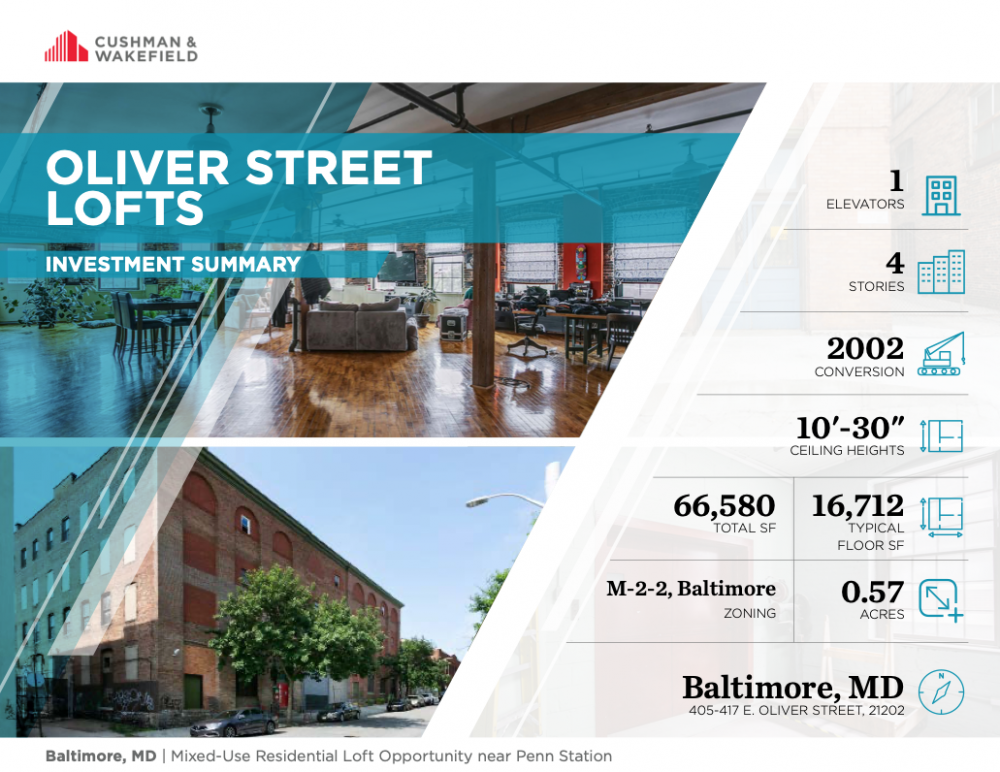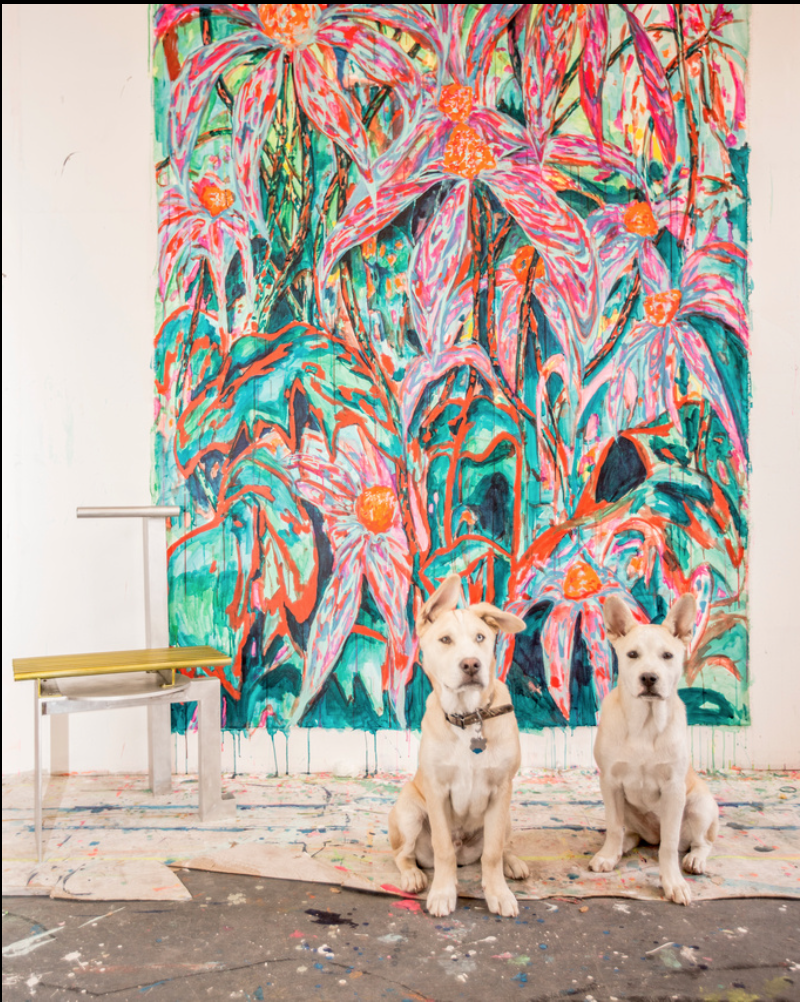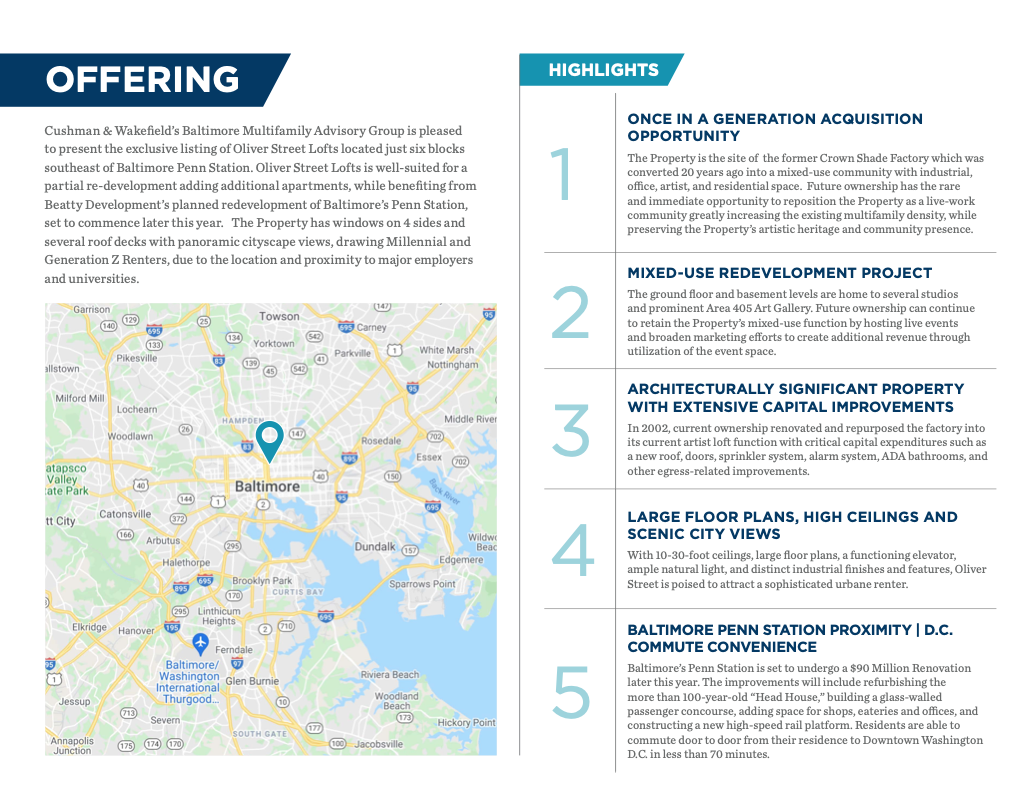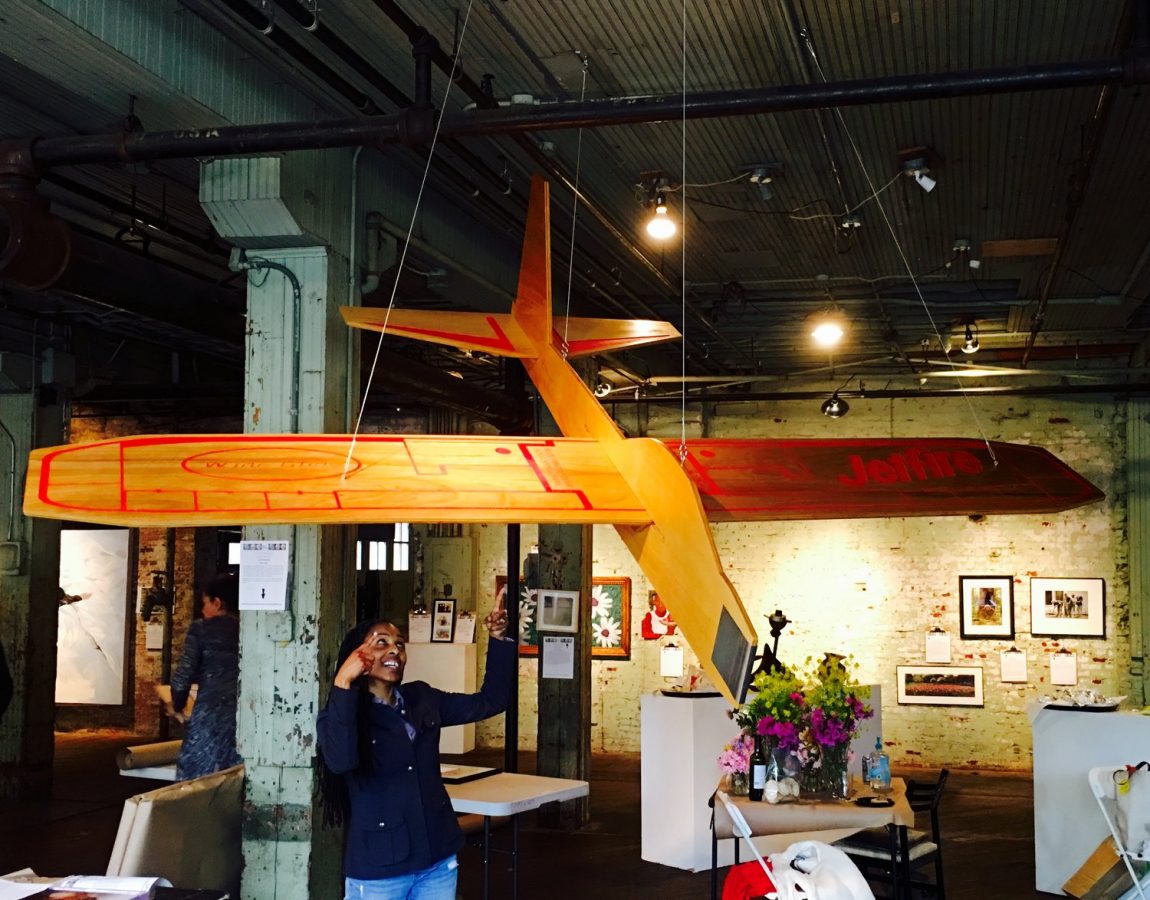Before it was purchased by Three Square Feet LLC, the building at 405-407 E. Oliver Street sat vacant for nearly twelve years. The only reason Watson found the building was because she saw an old For Sale sign on it. “She asked her real estate agent about it, and he assured her she wouldn’t want to see it,” McCabe wrote. “It was enormous and full of junk. He’d never shown it to anybody. The only reason she even considered looking at a place so large was because she had no luck finding a smaller space. In the late 1990s, early 2000s, most 5,000-to-10,000 square feet buildings were being picked up by dot-com start-ups that didn’t quite survive the decade.” However, once Watson and Vose got inside, they knew this building was the one.
Fifteen years later, after hundreds of exhibitions, fundraisers, community events, dinners, Area 405 has been listed for sale, a decision made by four partners, with Watson and Vose a dissenting minority of the LLC. We don’t know what will happen to the building, and the blithe, commercial language in the real estate listing completely negates the role and power that this building has played as an arts hub for the past fifteen years, how beloved this place is because hundreds, if not thousands of people, have been welcomed into a building that has offered freedom, hospitality, creativity, and an authenticity that is palpable. This role cannot be erased, as the understanding of the vital importance of this building is shared by thousands. Across the city and country, Area 405 is known as a beacon of hope for what artists are able to accomplish if they work together and it has been truly, genuinely, and generously available to anyone who needed it.
The Central Baltimore Partnership’s message about the sale offers some hope to artists, community members, and potential real estate investors: “Now that the building is on the market, the CBP is ready to work with a potential buyer who shares this mission, or has another plan that the community supports.” Janes said there are many equitable models they can follow and they’re interested in any viable and sustainable plans and it would be ideal to preserve the current look and feel of the space, keeping the entire first floor “as a vibrant, diverse, and affordable hub for the arts that is done with minimal alterations to these spaces” and the upper floor studios would be maintained with “minimal disruption.”
“To make this preservation sustainable would require that other areas of the building generate income that could sustain these uses and we are hoping to work with a new owner who can make that happen in a way that respects the legacy tenants, the building and the neighborhood,” says Janes.
“In cities across the US, artists and others who invest early in struggling communities are displaced by higher wealth investors who are attracted to the vibrant areas the artists help create,” says Janes. “This happens so frequently it is considered inevitable. But it is not inevitable. We have a chance to interrupt that pattern. We have what we need to do it: an active arts community, a strong neighborhood association, a concerned philanthropic and lending community, a city committed to equity, and flexible State resources.” Currently, the CBP has an opportunity to create a new model that includes both artists and real estate investors respectfully and equitably, a model that doesn’t exist anywhere else in the country.
In contrast, the sales description says nothing about equity or artists. Instead, “Future ownership has the rare and immediate opportunity to reposition the property as a live-work community greatly increasing the existing multifamily density, while preserving the property’s artistic heritage and community presence,” citing the growth and investment around Penn Station an obvious and easy investment to capitalize on.
In this instance it is easy to see the potential for investment in Baltimore’s Greenmount West neighborhood, especially after two decades of investment from artists and designation as an arts and entertainment district. Baltimore needs so much investment. However, it is infinitely more difficult to make a visionary investment when a neighborhood is perceived as less than desirable, the way Watson and Vose and their Three Square Feet partners did back in 2002 when they had to apply a dozen times to get approved for a mortgage in a neighborhood that was home to the Copycat artist housing/studios and a lot of abandoned warehouses and unoccupied homes.
While the visionary action of Three Square Feet LLC has proven to be transformative in this neighborhood and helped to make Greenmount West into the active, desirable, and stable part of town it is today, the eventual economic success of the region, contingent upon the city’s Penn Station investment, is actually making it difficult to maintain ownership of this important community building.
Back when he wrote about 405 in 2015, Bret McCabe could not have predicted the decision to sell this property, which is so much more than a piece of real estate to thousands of people whose lives it has touched. “Now, it’s possible that anybody who walked into the place could’ve recognized its potential,” he wrote. “The thing is, nobody else did. Two artists saw a possibility.”
“From the moment they started looking for a space in the late 1990s they had ideas for wherever they landed, including some kind of public component,” wrote McCabe. “The size of the building meant they had to think a little bigger—hence the ambitious scope of Area 405, the insistence to try to maintain affordable rents and safe spaces in the Oliver Street Studios, the attending neighborhood meetings and advocacy and advising on projects such as the City Arts buildings and the Baltimore Design School. Having affordable spaces to retain artists in Baltimore is one step. Building audiences and finding ways to support those artists is another. And that process takes open communication and careful nurturing.”
In the case of listing Area 405 for sale, the communication part is clearly missing with the surrounding community and the artists who rent studios in the space, and the reason for this lack of communication is as unclear as the future of the building.
According to the Baltimore Neighoborhood Indicators Alliance, the city has more than 16,000 vacant buildings and 14,000 vacant lots for a total of around 30,000 vacant properties and more than 75% of all vacant properties in Baltimore City are privately owned. In some neighborhoods the vacancy rate is as high as 30%. Within this context, it would be an even greater tragedy for a developer to purchase Area 405, a fully occupied building in the heart of an arts district, a structure teeming with artists achieving success and bringing investment to the area, only to return it to a state of blight and disrepair.
There are already so many developer-owned vacant buildings in the Station North A&E, sitting fallow and waiting for eventual investment. What Baltimore needs are more artists who are willing to invest their ideas, time, and resources into buildings and the diverse, verdant, and generative communities that build our city into a unique and rich environment for creative people and more individuals like Janes and Kutcher, working as advocates for art communities in allocating the necessary resources to keep arts districts stable. What Baltimore City needs, as Abdu Ali says, is to properly invest in the artists who are making this city special and to put pressure on landlords of unoccupied buildings, especially in arts districts, to sell or renovate.
“In the larger context, Area 405 looms large for what happens on Oliver Street for the A&E district,” says Kutcher. “There are great opportunities there and we know that large old industrial buildings need investment beyond what DIY groups can provide in order to really thrive. Recognizing that need and yet, there’s a path that could be out there to both realize investment in the building as well as the preservation of what the building means to the A&E district and to Baltimore. I am hopeful for a solution that provides an influx of capital and preserves use.”















